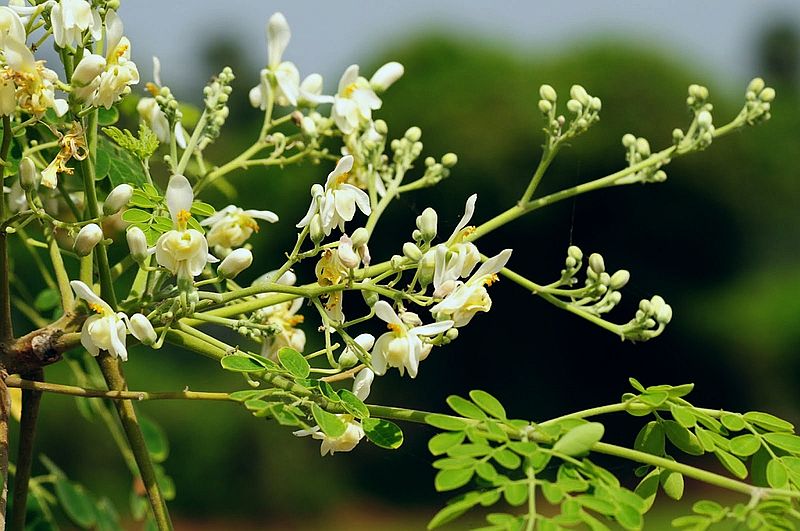
Moringa oleifera is the most widely cultivated species of the genus Moringa, which is the only genus in the family Moringaceae. It is a fast-growing, drought-resistant tree, native to the southern foothills of the Himalayas in northwestern India, and widely cultivated in tropical and subtropical areas where its young seed pods and leaves are used as vegetables. It can also be used for water purification and hand washing, and is sometimes used in herbal medicine.
Moringa is grown in home gardens in West Bengal and Odisha and as living fences in southern India and Thailand, where it is commonly sold in local markets. In the Philippines and Indonesia, it is commonly grown for its leaves which are used as food. Moringa is also actively cultivated by the World Vegetable Center in Taiwan, a center for vegetable research. In Haiti, it is grown as windbreaks and to help reduce soil erosion.
Nutrients of Horseradish Tree
Many parts of moringa are edible.
Leaves
The leaves are the most nutritious part of the plant, being a significant source of B vitamins, vitamin C, provitamin A as beta-carotene, vitamin K, manganese, and protein, among other essential nutrients. When compared with common foods particularly high in certain nutrients per 100 g fresh weight, cooked moringa leaves are considerable sources of these same nutrients. Some of the calcium in moringa leaves is bound as crystals of calcium oxalate though at levels 1/25th to 1/45th of that found in spinach, which is a negligible amount.
The leaves are cooked and used like spinach and are commonly dried and crushed into a powder used in soups and sauces.
Drumsticks
Drumstick vegetable pods at a market
The immature seed pods, called "drumsticks", are commonly consumed in South Asia. They are prepared by parboiling, and cooked in a curry until soft. The seed pods/fruits, even when cooked by boiling, remain particularly high in vitamin C (which may be degraded variably by cooking) and are also a good source of dietary fiber, potassium, magnesium, and manganese.
Seeds
The seeds, sometimes removed from more mature pods and eaten like peas or roasted like nuts, contain high levels of vitamin C and moderate amounts of B vitamins and dietary minerals.
Seed oil
Mature seeds yield 38–40% edible oil called ben oil from its high concentration of behenic acid. The refined oil is clear and odorless, and resists rancidity. The seed cake remaining after oil extraction may be used as a fertilizer or as a flocculent to purify water. Moringa seed oil also has potential for use as a biofuel.
Roots
The roots are shredded and used as a condiment with sharp flavor qualities deriving from significant content of polyphenols.
https://en.wikipedia.org/wiki/Moringa_oleifera
Edited by @arl
Hi! I am a robot. I just upvoted you! I found similar content that readers might be interested in:
https://en.wikipedia.org/wiki/Moringa_oleifera
Downvoting a post can decrease pending rewards and make it less visible. Common reasons:
Submit